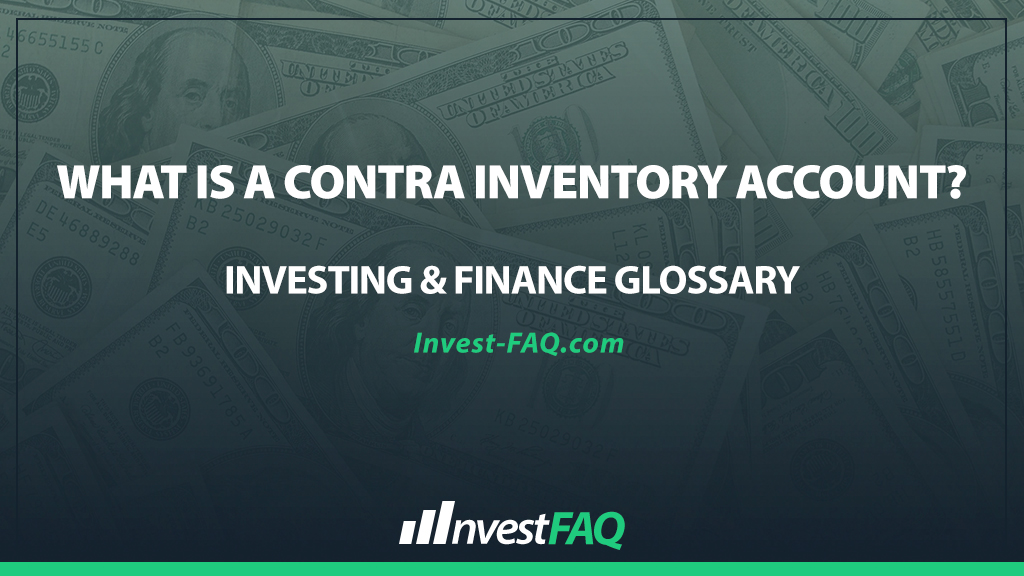
Contra Inventory Account
Contents
A contra inventory account is an account used in the accounting ledger that carries a balance opposite to the normal inventory account. It is typically used to adjust or offset the value of inventory, reflecting returns, allowances, or obsolescence.
Businesses utilize contra inventory accounts to accurately report the net value of inventory. This practice is crucial for companies dealing with high volumes of returns or frequently encountering obsolete inventory.
By adjusting the gross inventory value, companies can present a more realistic figure of what is truly available for sale, thereby enhancing financial accuracy and integrity. This adjustment is essential for internal decision-making, investor reporting, and compliance with accounting standards.
Example of a Contra Inventory Account
Imagine a company, FashionForward, that specializes in retail clothing. At the beginning of the fiscal year, FashionForward reports an inventory value of $500,000. However, due to changing fashion trends, $50,000 worth of inventory is deemed obsolete by the end of the year. To account for this, FashionForward uses a contra inventory account, such as an inventory allowance account, to adjust the reported value of its inventory.
In FashionForward’s case, the $50,000 adjustment for obsolete inventory is credited to the contra inventory account and debited from the inventory valuation allowance account.
This accounting action decreases the total inventory value reported on the balance sheet from $500,000 to $450,000, reflecting the true economic value of FashionForward’s inventory. This process ensures that the financial statements provide a realistic view of the inventory’s worth, avoiding overstatement of assets.
Types in Business Scenarios
Inventory Obsolescence Reserve: Accounts for items that are no longer sellable at their original price due to becoming outdated or no longer in demand.
Inventory Shrinkage Reserve: Adjusts inventory for discrepancies found during physical counts, often due to theft, loss, or damage.
Sales Returns Reserve: Anticipates future returns based on historical data, adjusting inventory levels accordingly.
Significance for Investing & Finance
The concept of a contra inventory account is significant in accounting as it ensures the accuracy and reliability of financial reporting. It allows businesses to present a true and fair view of their financial position by adjusting inventory values for returns, obsolescence, and shrinkage.
This practice is aligned with the conservative principle of accounting, which prefers to understate rather than overstate assets and revenues. Accurate inventory valuation is crucial for assessing a company’s financial health, planning for future inventory needs, and satisfying stakeholder and regulatory requirements for transparency and accountability.
Summary
A contra inventory account plays a pivotal role in the accurate reporting and management of inventory. It provides businesses with a mechanism to adjust the value of their inventory to reflect real conditions accurately, such as obsolescence, returns, and shrinkage.
This accounting practice is essential for presenting a truthful view of a company’s assets, aiding in decision-making, and ensuring compliance with financial reporting standards. By understanding and utilizing contra inventory accounts, businesses can maintain the integrity of their financial statements and uphold stakeholder confidence.
FAQ
What purpose does a contra inventory account serve in financial reporting?
A contra inventory account is used to reduce the gross amount of inventory reported on the balance sheet, providing a more accurate reflection of the inventory’s net realizable value by accounting for returns, obsolescence, or shrinkage.
How does an inventory obsolescence reserve impact the balance sheet?
An inventory obsolescence reserve, a type of contra inventory account, decreases the total inventory value on the balance sheet to reflect the diminished worth of outdated or unsellable stock, thereby ensuring the asset values are reported at their realistic recoverable amounts.
Can a contra inventory account affect a company’s profitability?
While a contra inventory account itself directly impacts asset values rather than profitability, by providing a more accurate inventory valuation, it indirectly influences profit margins by ensuring cost of goods sold reflects the true cost of inventory available for sale.
What is the difference between a contra inventory account and a regular inventory account?
A regular inventory account records the total cost of inventory purchased and held by a company, whereas a contra inventory account records decreases in inventory value due to factors like returns and obsolescence, offsetting the balance of the inventory account.
